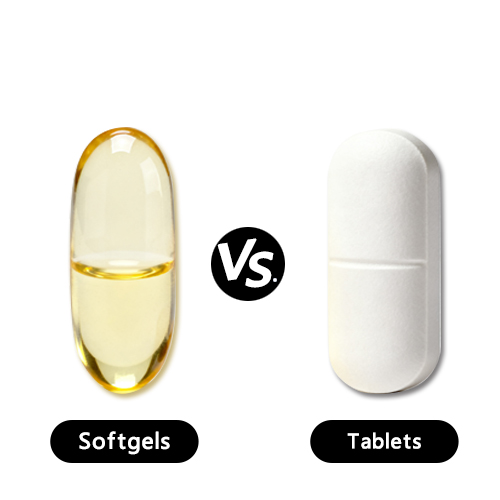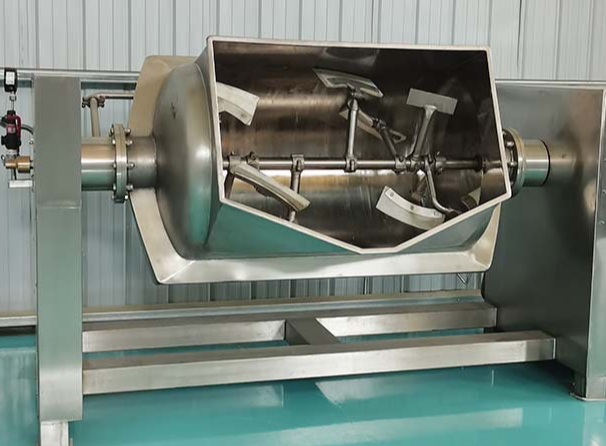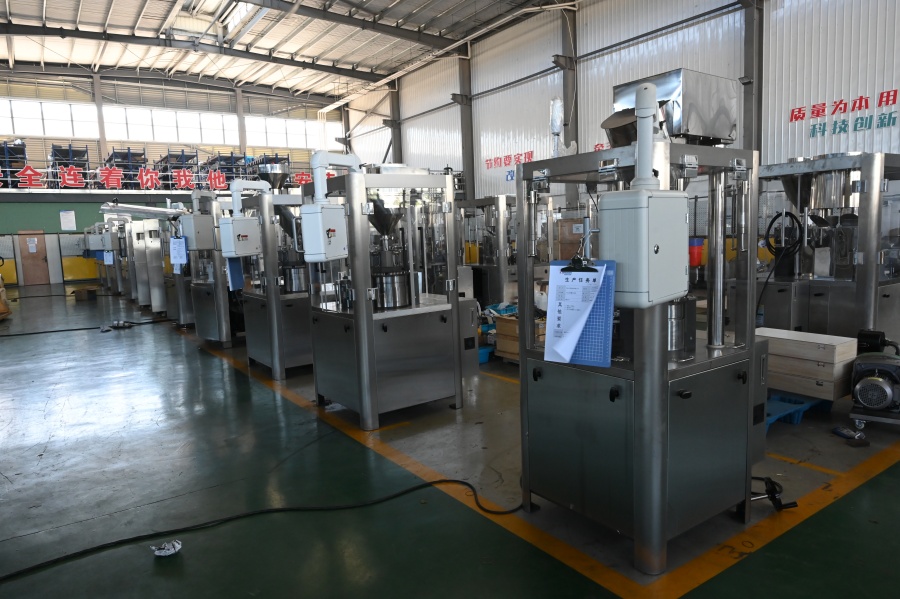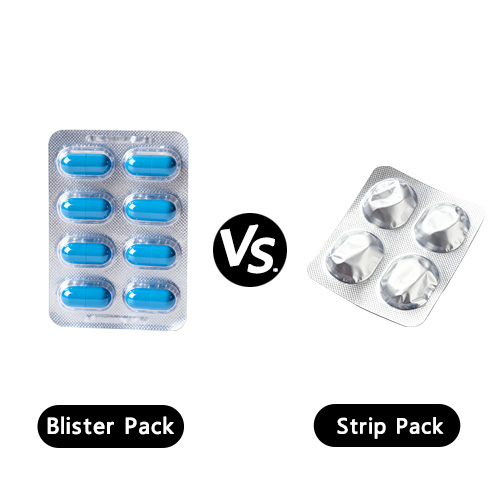When it comes to producing supplements, the choice of softgels vs tablets isn’t about appearance. It can influence everything from production and cost efficiency to consumer satisfaction and shelf life.
Tablets often excel in terms of affordability and durability, while softgels are distinguished by their bioavailability and consumer appeal. Both forms offer unique advantages and trade-offs, and the decisions you make can significantly impact the success of your product.
So, which option makes more sense for your business goals: softgels or tablets? Let’s find out.
What Are Tablets?

Tablets are one of the most common forms of oral supplements and medications. They are solid, compressed doses made by combining active ingredients with excipients (binders, fillers, or coatings).
Their simplicity and cost-effectiveness make them a leading choice in pharmaceutical and supplement production. You’d be surprised to know that 70% of all prescribed dosage forms worldwide are in tablet form.
Common Types of Tablets
Tablets come in various forms based on their efficacy and release time. Some of these common types include:
- Coated Tablets: Have an outer film or sugar layer that improves taste, appearance, and sometimes protects the active ingredient.
- Chewable Tablets: Designed to be chewed before swallowing, often used for vitamins or supplements aimed at children.
- Effervescent Tablets: Dissolve in water to create a fizzy drink, offering faster absorption and better consumer appeal.
Basics of Tablet Manufacturing
The tablet manufacturing process is relatively simple compared to other dosage forms. It typically involves:

- Blending: Mixing active ingredients with excipients for consistency.
- Granulation: Improving flowability and compressibility (sometimes skipped with direct compression).
- Compression: Using a tablet press to form the solid dose.
- Coating: Adding a protective or flavored layer.
What Are Softgels?

Softgels are a popular oral dosage form where liquid or semi-liquid ingredients are enclosed in a gelatin-based shell.
They are smooth, easy to swallow, and used for oils, fat-soluble vitamins, and other active ingredients that don’t work well in tablets.
Common Types of Softgels
Softgels are a type of capsule used for patients who have difficulty swallowing. However, they are also divided further into the following forms:
- Standard Softgels: The classic format, typically oval or oblong, used for vitamins, herbal extracts, and fish oils.
- Enteric-Coated Softgels: Designed to pass through the stomach and dissolve in the intestine, protecting sensitive ingredients from stomach acid.
- Veggie Softgels: Made from plant-based alternatives to gelatin, meeting the needs of vegetarian or vegan consumers.
Basics of Softgel Manufacturing
The production of softgels is more specialized than tablets. This process requires more equipment and expertise but results in a premium, consumer-friendly product. It usually involves:
- Formulation: Preparing the fill material, which can be oils, suspensions, or semi-liquids.
- Encapsulation: Using a rotary die machine to form the gelatin shell around the fill.
- Drying: Allowing softgels to stabilize and achieve the right consistency.
- Inspection & Packaging: Verifying product quality and detecting defects.
Softgels vs Tablets: Key Comparisons
Softgels vs tablets has been a long-standing debate, which we’ll end today. The key differences between these two dosage forms include:

1. Manufacturing Costs
In pharmaceutical production, costs are always at the forefront of your mind. The choice between softgels and tablets isn’t just about what’s easier to make; it’s about what makes sense long-term.
Softgels are more expensive to produce because they require specialized machines and the use of gelatin for encapsulation. Tablets, on the other hand, are cheaper and easier to manufacture in bulk.
| Aspect | Softgels | Tablets |
| Setup Costs | High. Specialized equipment required. | Lower. Standard machines are used. |
| Per Unit Cost | Higher | Lower |
| Scalability | Slower, more complex | Faster, easier at large scale |
2. Shelf Life & Stability
No manufacturer wants products returned because they didn’t survive storage or shipping. Shelf life is a big deal, especially if you’re selling at scale or in hot climates. Remember, some formats hold better than others.
Tablets usually have a longer shelf life, especially in hot or humid conditions. Meanwhile, softgels can degrade more quickly, although modern coatings have improved their stability.
| Aspect | Softgels | Tablets |
| Shelf Life | Shorter in humidity | Longer, more stable |
| Moisture Impact | Sensitive to storage conditions | Less affected |
| Durability | Softer, can leak or deform | Harder, less fragile |
3. Consumer Experience

At the end of the day, the customer decides whether they stick with your product. If swallowing is hard or the taste is bad, they’ll look elsewhere. In fact, 74% of supplement users prefer softgels or capsules over traditional tablets.
So, if you’re looking for medications that are smooth and easy to swallow, softgels are the better choice for consumers. Although standard tablets can be large and clunky, they offer more versatility.
| Aspect | Softgels | Tablets |
| Swallowability | Very easy | Difficult (if large) |
| Absorption | Faster for many ingredients | Slower in some cases |
| Taste | Neutral (coated) | May taste chalky or bitter |
4. Ingredient Compatibility
Not every ingredient plays nicely with every format. Some require oils, others require powders, and some require a combination of both. The wrong choice could limit your formulation or even weaken your product.
Some active ingredients are better suited for tablets, while others (like oils) work best in softgels. Here’s a comparison to keep in mind:
| Aspect | Softgels | Tablets |
| Best For | Oils, fat-soluble vitamins, liquids | Powders, blends, multi-ingredient |
| Customization | Limited | Highly flexible |
| Dose Combination | Hard to combine multiple active ingredients | Easy to combine multiple active ingredients |
5. Market Perception
Your product isn’t just about what’s inside; it’s also about how it looks and feels to customers. Some formats signal “premium,” while others are chosen for affordability.
Consider how you want your brand to be perceived in the market. Consumers often see softgels as more “premium,” while tablets are viewed as standard.
| Aspect | Softgels | Tablets |
| Consumer appeal | Premium, modern look | Traditional, cost-effective |
| Brand Value | Higher perceived quality | More price-driven |
| Popularity | Favored for supplements | Common in pharmaceuticals |
Which Is Better for Manufacturers? Softgels vs Tablets
So, after breaking down costs, shelf life, consumer experience, and everything in between, the big question remains: which option makes the most sense for manufacturers? The truth is, there are no one-size-fits-all answers.
If you’re working with oil-based ingredients or want to market a premium product that stands out, softgels give you the edge. They look sleek, are easier for consumers to swallow, and boost absorption. That’s also why they’re so common in the supplement industry.
On the other hand, if your focus is on scalability, cost-efficiency, and versatility, tablets usually come out on top. Tablets still dominate the global oral dosage market, making up over 30% of all pharmaceutical sales worldwide.
In short:
- Softgels = Premium feel, higher costs, niche applications.
- Tablets = Cost-effective, scalable, versatile.
The Right Choice Comes Down to Your Equipment
At the end of the day, whether you lean toward softgels or tablets, the real challenge is having the right machinery. Many manufacturers struggle here, not because they choose the wrong dosage form, but because they lack the right equipment partner.
The solution? Finetech.
With over 30 years of experience, we’ve helped manufacturers worldwide set up complete pharmaceutical production lines. If you’re looking to build a solution that fits your budget, Finetech is where you need to look.
Request a free quote today from pharmaceutical specialists!
FAQs
1. Are softgels more expensive to manufacture than tablets?
Yes. Softgels require specialized encapsulation equipment, higher material costs, and skilled operators. Tablets, on the other hand, utilize simpler machines and raw materials, which lowers production costs by up to 40%.
2. Which format has better shelf life: tablets or softgels?
Tablets generally last longer. They resist heat, humidity, and physical damage better than softgels. Softgels are sensitive to moisture and temperature, which can cause them to stick, leak, or deform.
3. Which format is better for high-volume production?
Tablets are better suited for mass production. A standard high-speed tablet press can produce over 200,000 tablets per hour, whereas softgel machines operate much more slowly and require longer drying times.
Recommend Readings:
Capsule vs Tablet: The Complete Beginner’s Guide.
What is Softgel Capsule? Everything You Need to Know.
Soft Capsule vs Hard Capsule: Which Suits Best for You!.
Understanding Capsules: The Essential Guide to Pharmaceutical Capsules.




